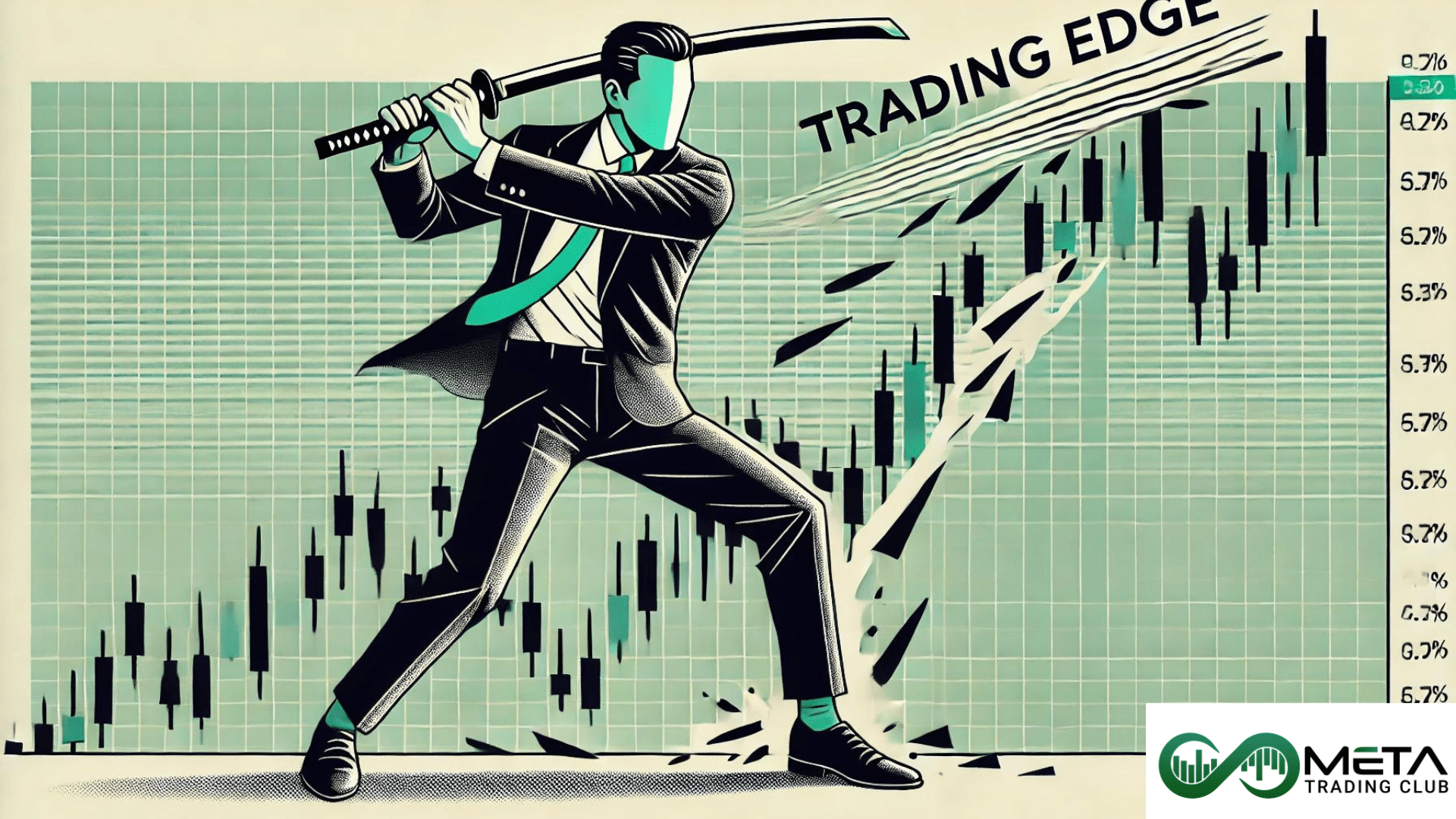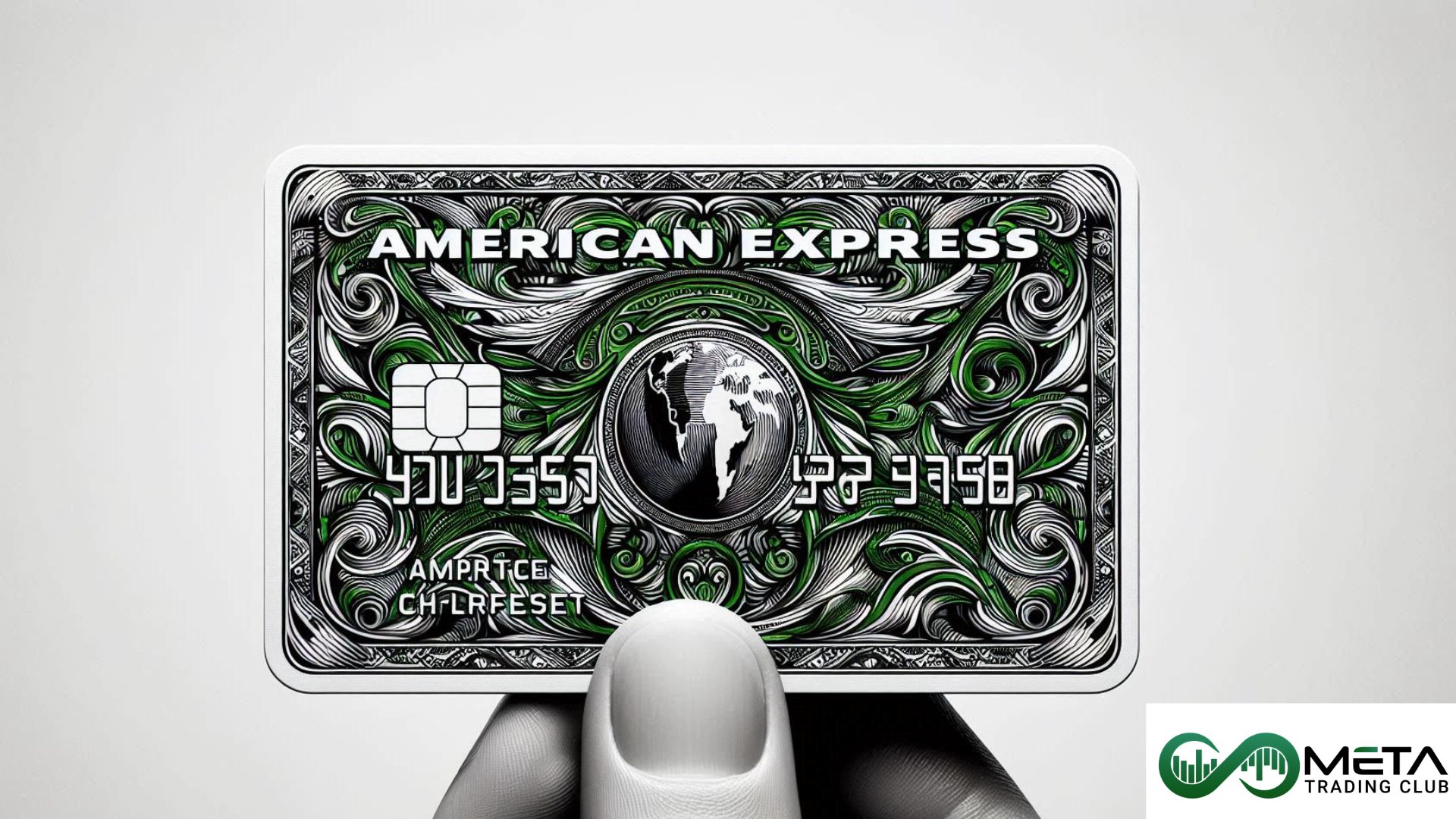We’ve all heard the daunting statistic: 99% of traders lose money in the market. But if this is common knowledge, why do so many traders still fall into the same trap? The answer lies in two critical areas: common pitfalls and the absence of a Trading Edge.
This “Edge” isn’t just a modern trading concept, it’s a technique as old as time itself, one that has been applied to nearly every skill humanity has perfected over the centuries. Throughout history, those who possess this edge consistently outperform their peers, gaining an unfair advantage that leaves 99% of market participants behind.
In the sections that follow, we’ll explore the steps and skills you need to develop in order to achieve this elusive Trading Edge. But before we get into the hows, let’s first unravel the mystery, what exactly is a Trading Edge?
Table of Contents
What is Trading Edge?
Let’s talk about Tony. Tony loves gambling and heads to Las Vegas twice a year with all his savings. Sometimes, he gets lucky and scores a win. But when he stays at the tables long enough, he ends up losing it all like always.
Why is that? Do you think making regular trips to Vegas is a legitimate strategy for building wealth? Is the chance of winning in Vegas stacked in favor of the player or the casino owner?
You don’t have to be a genius to know casinos have higher chance of winning than any individual player. In other words, Vegas casinos have an “Edge” over gamblers. This means that, as a customer, your chances of walking away with winnings are slim compared to the house. And it’s not just about the odds, casinos employ tricks to keep you playing longer and losing even more. (e.g. offering free drinks to lower your inhibitions)
So, what exactly is a trading edge? In simple terms, when you have a greater chance of winning than losing, you have an edge. Imagine a two-sided market where a trade has a 50% chance of winning or losing. If you trade long enough with this setup, your losses and gains will eventually balance out. That is, unless you unknowingly reduce your chances of winning, which is easier than you might think
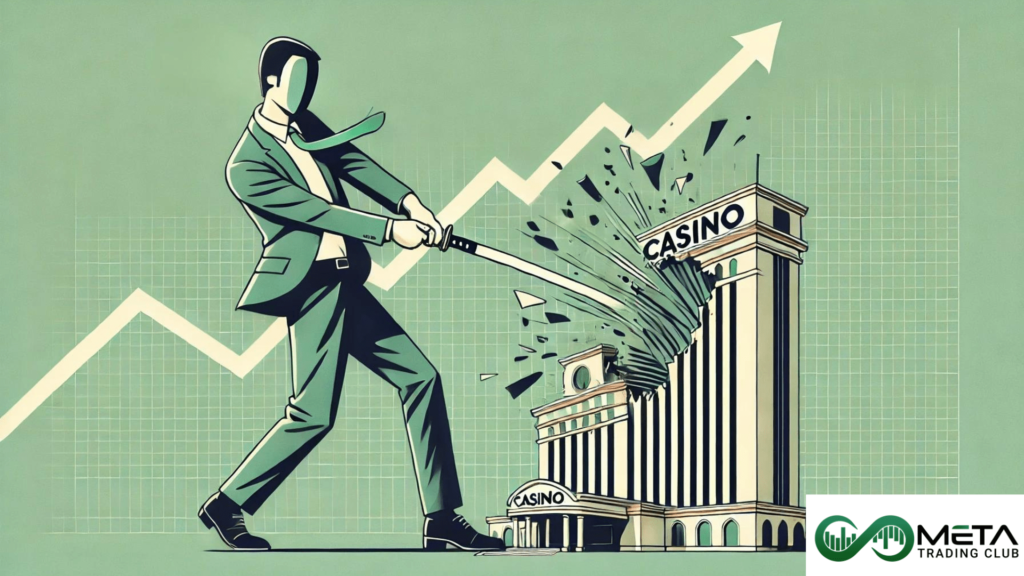
But what happens when you flip the script? What if you minimize your losses while letting your profits run? What if you manage to tip the odds slightly in your favor, from 50% to 51%, and trade consistently? Now, what if you push that advantage even further, to 60% or even 70%? That’s the essence of a trading edge. It’s the edge that allows you to carve your way out of the losing mass and into the elite class.
How to Develop a Trading Edge?
Like mastery in any other skill, refining your trading edge takes time, effort, and discipline. In this section, we’ll explore several concepts that can help you sharpen and refine your edge:
- Learn Technical Concepts
Master chart analysis, indicators, and patterns to identify high probability trade setups. - Understand Risk Management
Risk Management is all about implementing position sizing, stop loss orders, and a favorable reward to risk ratio to protect your capital. - Discover Your Unique Attributes and Flaws
Identify your strengths and weaknesses to choose strategies that align with your natural tendencies. - Analyze the Fundamental News and Events
Stay informed about market moving events and economic events to make informed trading decisions. - Develop a Trading Strategy
Build and refine a strategy that consistently gives you an edge in the markets you trade. - Continue Learning and Adapting
Evolve your strategies and techniques by learning from market changes, successes, and failures.
Now we know what needs to be done at the surface level. Let’s dive deeper into each concept and figure out what should you, the average Joe, do to sharpen your edge and what the 99% of traders do wrong that costs them their trading journey, or worse, their savings.

Learn Technical Concepts
Technical analysis is a method used by traders to evaluate and predict future price movements based on past market data, primarily price and volume. It’s all about studying charts, patterns, and indicators to find the best moments to buy or sell an asset.
Now, let’s get one thing straight: technical analysis isn’t magic. Sure, it might seem like some mystical art that can foresee the future, but unfortunately, it’s not astrology! Technicals can’t predict the future with absolute certainty, but they’re an incredibly useful tool.
Technical analysis helps you identify entry and exit signals, spot trends, and recognize potential reversals or continuations of those trends. In other words, while they might not have a crystal ball, technicals are fantastic at anticipating what might happen next. With a firm grip on these concepts, you’ll be better equipped to navigate the markets and make informed decisions.
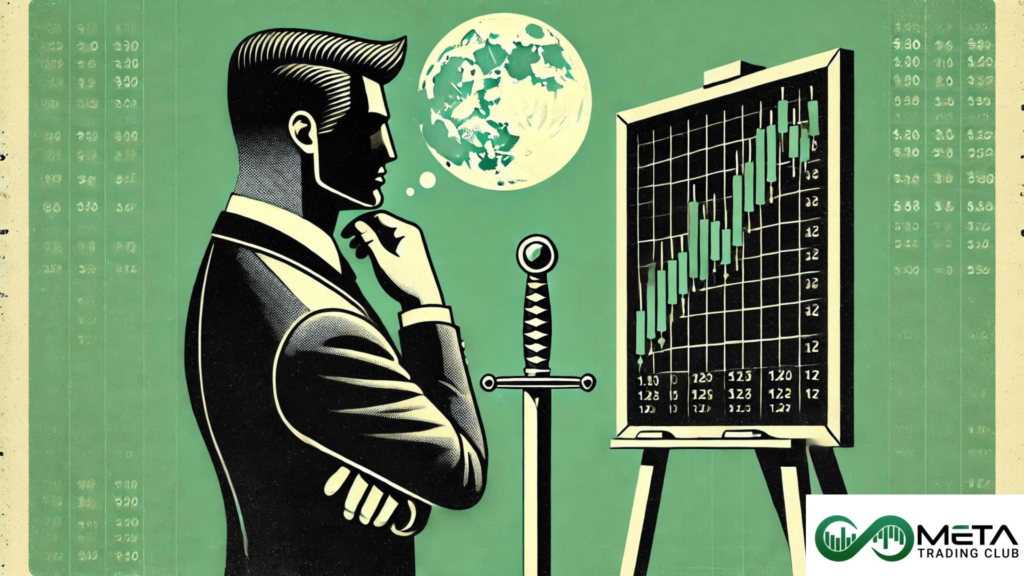
Understand Risk Management
Risk management is one of the most crucial elements of your Trading Edge. This is the part of trading where you minimize the chances of losing big, or lose as little as possible.
Several key concepts are central to effective risk management:
- Stop Loss: A tool that automatically closes your trade if the market moves against you by a certain amount, limiting your potential loss.
- Reward to Risk Ratio: Reward to Risk Ratio (RRR) is the balance between how much you stand to gain versus how much you’re willing to risk on a trade. A favorable ratio is essential for long term profitability.
- Position Sizing: Position Sizing is about deciding how much of your capital to risk on a single trade. Proper position sizing helps protect your account from significant losses while maximizing gains.
- Leverage: Borrowing capital to increase your trading position size. While leverage can amplify profits, it can also magnify losses, making it a double edged sword.
To manage risk effectively, it’s essential to have a checklist or structured plan that outlines how much risk you’re willing to tolerate on each trade. This plan should detail how much of your capital you’re willing to risk, when to set stop losses, and how to size your positions. Successful traders always stick to their risk management plan, no matter how tempting it might be to stray from it.
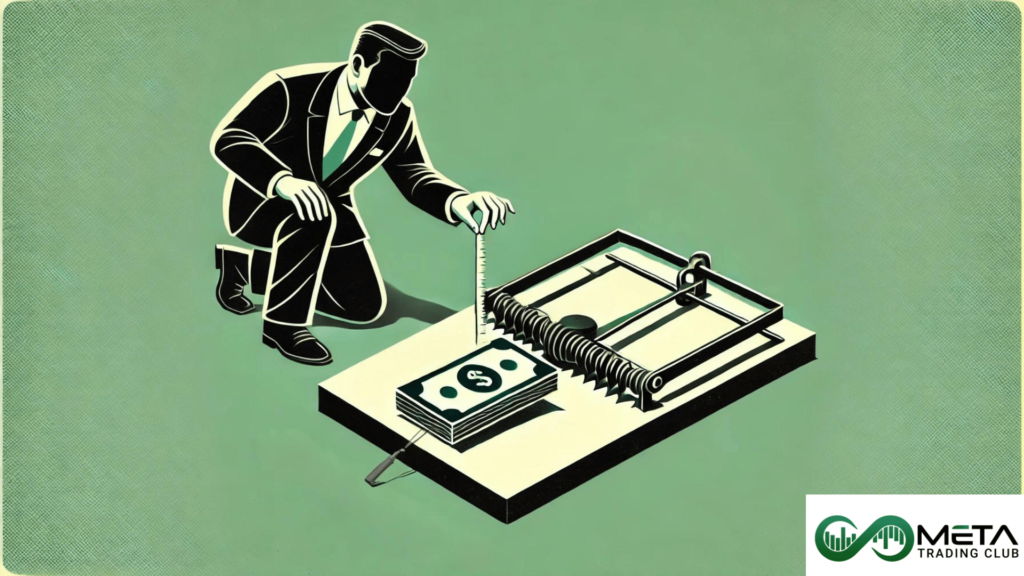
Incorporating these risk management strategies into your trading system is critical to protecting your capital and ensuring long term success in the markets.
Discover Your Unique Attributes and Flaws
Traders are people, and people aren’t all the same. We each have unique traits, strengths, and flaws that play a crucial role in our trading journey. Recognizing and understanding these personal attributes is essential when learning to trade.
For example, if you’re someone who excels at seeing the bigger picture and anticipating long term outcomes, a trading style like position trading, where you hold trades over weeks or months, might be the perfect fit for you.
On the other hand, if you struggle with long term vision and thrive on quick decisions and an adrenaline rush, scalping or day trading, which involves making rapid trades within a single day, might suit you better.
Unfortunately, many trading programs overlook this individualist approach. They lump everyone together and expect them to follow the same path to success. This one size fits all approach can be devastating for some traders, leading to frustration, burnout, and ultimately, failure.

At Meta Trading Club, we understand that a trader’s personality must be considered in both their education and their trading goals. Without this personalized approach, traders may never reach their peak potential. It can be even worse, they could lose all the time, effort, and money they’ve invested.
By discovering and embracing your unique attributes and flaws, you can choose the trading style and strategies that align with your natural strengths. You set yourself up for success in the markets while minimizing the effect of your flaws.
Analyze the Fundamental News and Events
Technical analysis and reading price charts are only half of the trading equation. The other significant half lies in fundamental analysis, which focuses on the underlying factors that drive market movements, including news and events that can act as powerful catalysts.
Fundamental analysis involves examining economic indicators, corporate earnings, geopolitical events, and other news that can influence the value of an asset. While technical analysis helps you understand the what and when of price movements, fundamental analysis digs into the why. It gives you a clearer vision of the market by providing context and insight into why prices might be moving in a particular direction.
Incorporating fundamental analysis into your trading strategy refines your Trading Edge. It provides you with first hand information that can give you a head start, allowing you to anticipate market shifts before they’re fully reflected in the charts.
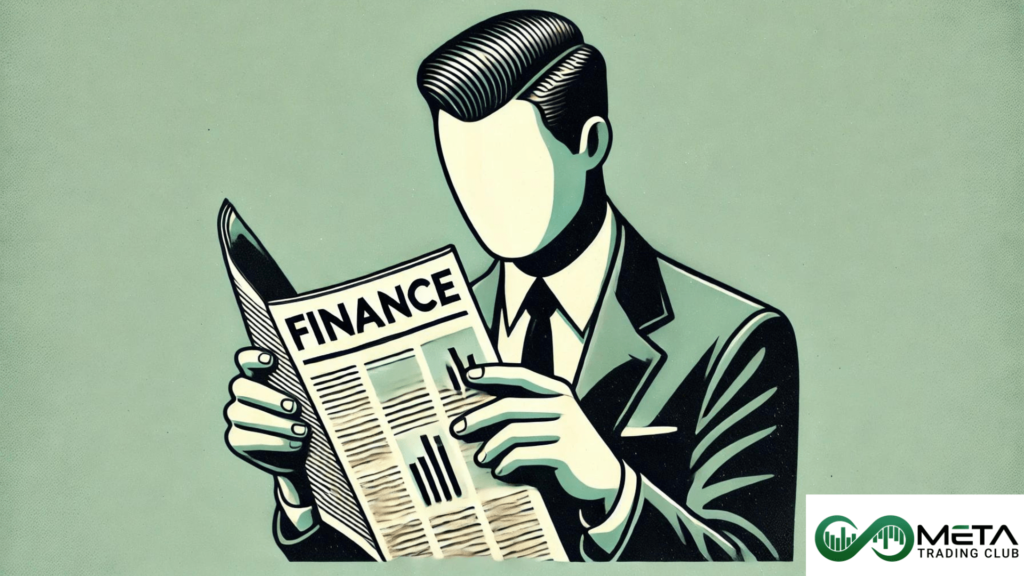
This is crucial, as traders who rely solely on technical analysis often only see the effects of these fundamental factors after they’ve already moved the market. By staying informed about the latest news and events, you position yourself ahead of the curve, enhancing your ability to make informed, timely trading decisions.
Develop a Trading Strategy
A successful trader doesn’t rely on luck, they have a well thought out trading strategy that guides their decisions in the market. Developing a strategy is about creating a clear plan that outlines when you’ll trade, what you’ll trade, and where you’ll enter and exit trades.
Your trading strategy should be built around your strengths, weaknesses, and trading style. It could be based on technical analysis, fundamental analysis, or a combination of both. For instance, you might use technical indicators to identify trade confirmations and entry points while relying on fundamental analysis to confirm the direction of the trade.
A strong trading strategy also includes rules for risk management, defining how much you’re willing to risk on each trade, where to set your stop losses, and how to size your positions. It’s important to test your strategy in different market conditions, either through backtesting with historical data or by using a demo account to simulate real trading without financial risk.

Finally, consistency is key. A strategy only works if you stick to it, avoiding the temptation to make impulsive decisions. Over time, as you gain more experience and the market evolves, you may need to refine and adapt your strategy, but having a solid foundation is essential for long term success.
Continue Learning and Adapting
In the world of trading, the only constant is change. Markets evolve, new trends emerge, and what worked yesterday might not work tomorrow. That’s why among the most critical aspects of maintaining your Trading Edge is the commitment to continuous learning and adapting.
To stay ahead, you must regularly update your knowledge and refine your strategies. This could mean studying new trading techniques, keeping up with the latest economic events and developments, or analyzing your previously journaled trades to learn from both your successes and mistakes.
Adapting also means being flexible in your approach. If market conditions shift or your strategy starts to underperform, it’s essential to tweak your methods or even develop new ones. This could involve adjusting your risk management rules, experimenting with different indicators, or exploring new assets or even another market.
Remember, the best traders are lifelong learners. They understand that success isn’t about finding a single formula and sticking to it blindly. It’s about evolving with the market, continually seeking out new knowledge, and adapting their strategies to stay ahead of the curve.
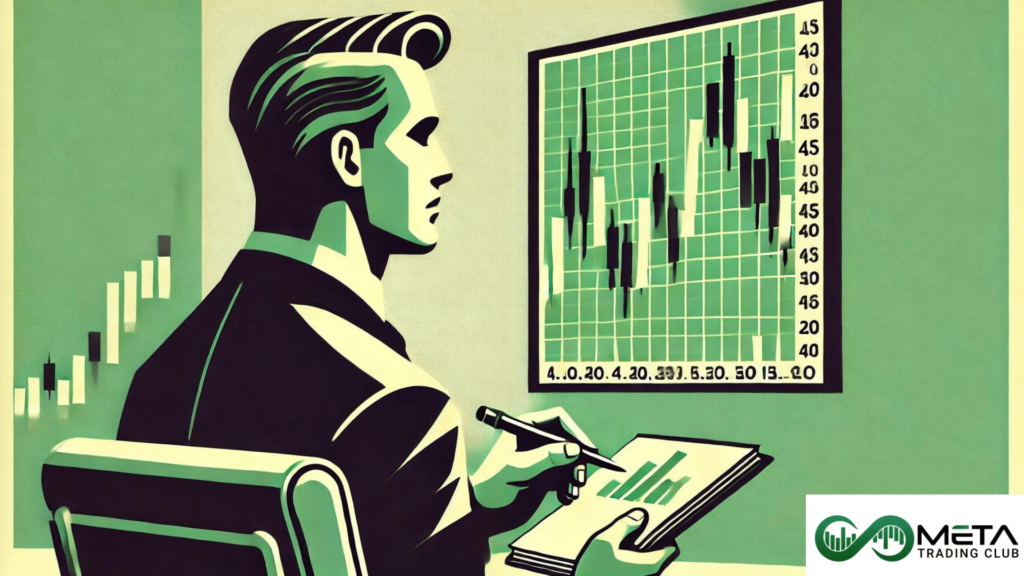
Final Words
We’ve covered the essential steps to developing a Trading Edge, from mastering technical concepts and understanding risk management, to analyzing fundamental news, discovering your unique trading style, and continuously learning and adapting. Each of these elements is crucial for achieving long term success in trading.
If you’re serious about trading and committed to achieving financial independence, consider checking out the Meta Trading Club Incubator. Here, you’ll discover your unique trading personality and develop a personalized plan to reach your financial goals. The journey to becoming a successful trader starts with understanding yourself and building on that foundation, let Meta Trading Club be your guide to financial independence.

A Trading Edge is an advantage that increases your chances of making profitable trades, often through superior strategies, knowledge, or risk management.
Develop a Trading Edge by mastering technical and fundamental analysis, implementing strong risk management, refining strategies, and continuously learning and adapting.
Identify your unique strengths, trading style, and knowledge areas; then build a strategy that leverages these to consistently outperform the market.
Use technical analysis to identify entry and exit points, spot trends, and anticipate potential market reversals, giving you a timing advantage.
Incorporate fundamental analysis to understand market drivers, anticipate economic shifts, and gain insights that inform and refine your trading decisions.

